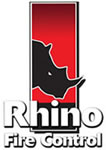
Running a Successful Fire Drill
Running Successful Fire Drills and Reducing Fire Drill Response Times
Running a successful fire drill is an essential part of your workplace fire safety commitments. Ensuring that premises are evacuated in a timely and orderly fashion is necessary to Protect Life & Health from the dangers of fire. Today we are going to share best practices for fire evacuation and tips on how to reduce response times in staff members.
What is the Purpose of the Fire Drill?
The purpose of the drill is to rehearse and train staff in order to ascertain that:
- Staff who may be at risk can act in a calm and orderly manner and those who are allocated duties know what they need to do. Rhino Fire Control Staff Training may be appropriate to ensure your staff know exactly how to act in the event of a fire,
- The building can be evacuated quickly,
- All exit routes are used in accordance with the practiced plan.
What Is the Best Way to Run A Fire Drill?
A fire drill should be as realistic a scenario as possible which means that ideally only the designated fire warden(s) plans and executes the drill. Also remember that if your Fire Alarm is linked to a central monitoring station it is important to ensure that they are advised of your drill prior to sounding the alarm so that the emergency services are not notified.
If your building has multiple exit routes it is also advisable to block one or more routes during each test to assess responses from a potential scenario that could occur in a real fire. Blocking a route is to simulate what could happen in a real fire and will test whether staff know other routes well enough to use them in a panic situation.
All members of staff, regardless of seniority and commitments should evacuate during a fire drill to reduce complacency and make the test as accurate as possible.
How Often Should You Conduct Fire Drills
It is recommended that you conduct a fire drill at least twice a year to ensure problems haven’t arisen. If a fire drill results in a poor response time then you should increase the frequency of testing. However, we do not recommend running them too regularly or staff may become complacent.
How Long Should Evacuations Take?
Evacuation time expectation will vary according to different situations and the policies the company may have in place. Factors that should be taken into consideration include; number of persons, layout of the environment and size of the building. However, for most situations we recommend that it should take no longer than 3 minutes.
How to Improve Response Times
If evacuations take longer than standard expectations, you should review the training and planning that you are utilising. Initial checks need to include;
- Did all fire detection and alert equipment function properly? If not, you will need to contact your Fire Safety Maintenance Provider.
- Did all staff hear the fire alarm?
- Are evacuation procedures and pathways correctly laid out?
- Did fire wardens follow procedures?
- Have individual staff been given adequate training?
- Do all staff know where the emergency exits and fire assembly points are?
- Are contingency plans (alternative fire escape routes) communicated clearly to all staff?
- Did staff dawdle, loiter, collect personal belongings or otherwise delay evacuation times?
If any equipment failed to perform during your drill or staff failed to hear the alarm then contact your maintenance provider immediately. Regularly scheduled maintenance should prevent equipment malfunction but drills can sometimes highlight issues. It may be that your site layout or processes are such that additional sounders are required.
Fire drills can also identify flaws in your procedures and plans. You may be able to identify problems such as too many people heading to the same exits causing congestion, pathway signage causing confusion or certain areas of the building not being covered sufficiently by either staff or equipment.
If staff response times are identified as the major contributor to delayed time then you need to make sure that follow up evacuation training is carried out. This can be in addition to the recommended yearly refresher course.
Carrying out regular fire drills allows you to identify potential issues and identify appropriate responses helping further ensure the safety of you and your colleagues.
If you need additional help managing your fire safety, get in touch today.


